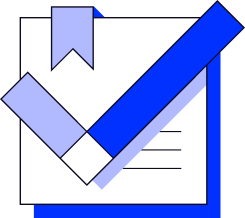
Efficacité accrue
Découvre les goulots d'étranglement pour rationaliser les flux de travail et améliorer l'efficacité des processus.

Le process mining est une discipline analytique de pointe qui utilise les données des journaux d'événements pour décortiquer les processus métiers et acquérir une compréhension approfondie de leur flux opérationnel. Il s'agit d'un outil qui se situe à l'intersection de la science des données et de la gestion des processus, scrutant les journaux d'événements pour découvrir, surveiller et améliorer les processus du monde réel. Un exemple concret de son application est la gestion de la chaîne d'approvisionnement, où le Process mining peut analyser le cycle de vie d'un produit, de la fabrication à la livraison, en découvrant les goulots d'étranglement, en identifiant les écarts de processus et en offrant une visibilité du fonctionnement global de la chaîne d'approvisionnement.
Le process mining offre des avantages significatifs, révolutionnant la façon dont les entreprises comprennent et optimisent leurs opérations.


Découvre les goulots d'étranglement pour rationaliser les flux de travail et améliorer l'efficacité des processus.

Identifie les pratiques inutiles, contribuant ainsi à réduire les coûts opérationnels.

Surveille les processus pour garantir le respect des normes réglementaires.

Offre une visibilité claire sur les processus réels, favorisant la transparence.

Suivi des performances des processus au fil du temps en vue d’une amélioration continue.

Aide à la détection précoce des écarts de processus, à la gestion des risques opérationnels.












Le process mining fait des vagues dans de nombreux secteurs en raison de son potentiel de transformation de l'efficacité opérationnelle. Dans la gestion immobilière, il est utilisé pour suivre et optimiser le cycle de vie des processus de location ou de bail, permettant ainsi un service plus rationalisé. Dans l’administration fiscale, l’exploration de processus facilite l’analyse complète des processus de déclaration et d’audit fiscaux, aidant à identifier les goulots d’étranglement et à garantir la conformité réglementaire. Le secteur de l’hôtellerie l’utilise pour améliorer l’expérience client en optimisant des processus tels que les réservations, les enregistrements et le ménage. Il est également répandu dans des secteurs tels que la santé pour la cartographie du parcours du patient, la fabrication pour l’optimisation des processus de production et la logistique pour améliorer la gestion de la chaîne d’approvisionnement.
















Robotic Process Automation (RPA) greatly benefits from advancements in Artificial Intelligence (AI). While RPA is excellent at following rules-based processes, AI provides the capability for RPA bots to learn, adapt, and make decisions, enhancing their functionality. AI-powered cognitive capabilities like Natural Language Processing (NLP), Machine Learning (ML), and Computer Vision enable bots to understand and respond to text or voice commands, learn from historical data, and recognize images, respectively. For instance, in customer service, AI-powered RPA can analyze customer sentiments in real-time, allowing bots to handle customer complaints and queries more effectively, delivering personalized responses and improving overall customer experience.
